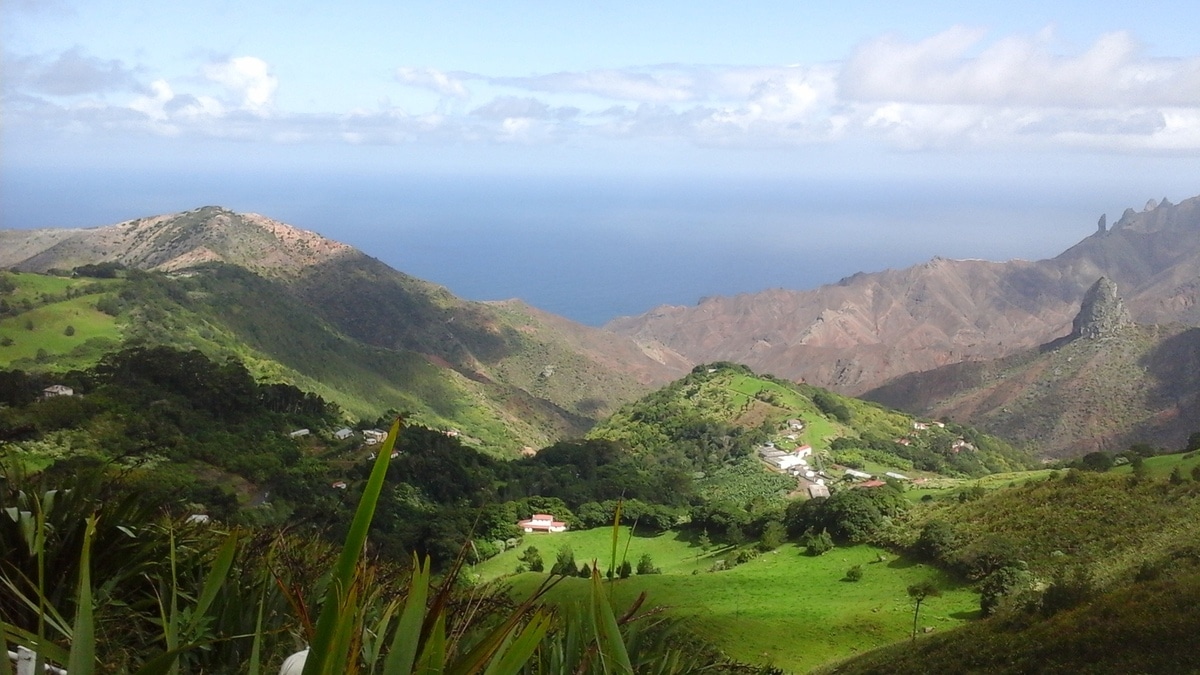Modest island in the middle of Atlantic Ocean, 2000 kilometers from Africa and 3000 kilometers from Brazil, the British Saint Helena does not offer the tropical climate that one would expect. Probably a chance for the Mameluck Ali (1788 - 1856) who found the necessary ingredients for the empirical reconstitution of the Emperor's Eau de Cologne.
England, a precious help in the import of the necessary ingredients for Cologne.
Discovered in the 16th century by a Portuguese navigator, the island surprises by its temperate climate, its fresh water and its prodigality. Famous sailors, the British seized St. Helena in the 17th century and have the favourable idea to introduce lemon trees, essential ingredient in the Eau de Cologne. Then it is the spirited botanist William John Burchell (1781 – 1863) who settles on the island to study the flora from 1805 to 1810. Five years during which our scientist introduced plants from around the world, revealing a perfect unconsciousness as to risks that his experiments would put on the endemic species. Ironically, the subjects of the perfidious Albion prepared the ground for the future conception of Eau de Cologne.
Then it is François Antommarchi (1780 or 1789 – 1838), doctor by profession, who was dispatched on the island in 1819 by Maria Letizia Bonaparte (1750 – 1836), the Emperor’s mother. During this stay, he wrote a “Sketch of the flora of St. Helena” published in 1825 and whose spiteful English say that it is a “work of mediocre quality” (William Botting Hemsley, botanist) but that does not matter, it is enough for us to foresee the ingredients to which the Mamelouk Ali had access to reproduce the Emperor’s dear Cologne.
Do you like this article?
Like Bonaparte, you do not want to be disturbed for no reason. Our newsletter will be discreet, while allowing you to discover stories and anecdotes sometimes little known to the general public.
Congratulations!
You are now registered to our Newsletter.
The Mediterranean flora of Saint Helena.
Cologne is composed of citrus, bergamot, rosemary, orange blossom, lavender and cinnamon. Each recipe introduces variants by adding or removing ingredients. The Mameluck Ali was not unaware of this when he undertook to reproduce the fragrance. Thus, the work of Antommarchi allows us to apprehend the flora to which the budding perfumer had access. Melissa, false marjoram (but as well odoriferous), thyme, rosemary, wormwood, angelica, nutmeg, lemon peel and wallflower (which flowers have a scent resembling that of clove) grew freely and at hand. As for the aromatics often used in the preparation of the Cologne (cinnamon and cardamom in particular), it is very conceivable that the supply of the island by the ships of the British East India Company provided the lack of these ingredients.
If Napoleon quickly challenged the medical skills of Antommarchi, he certainly does not question his taste for botany that, perhaps, participated in the improvement of the Mameluck recipe.
Marielle Brie de Lagerac
Marielle Brie est historienne de l’art pour le marché de l’art et de l’antiquité et auteur du blog « Objets d’Art & d'Histoire ».
